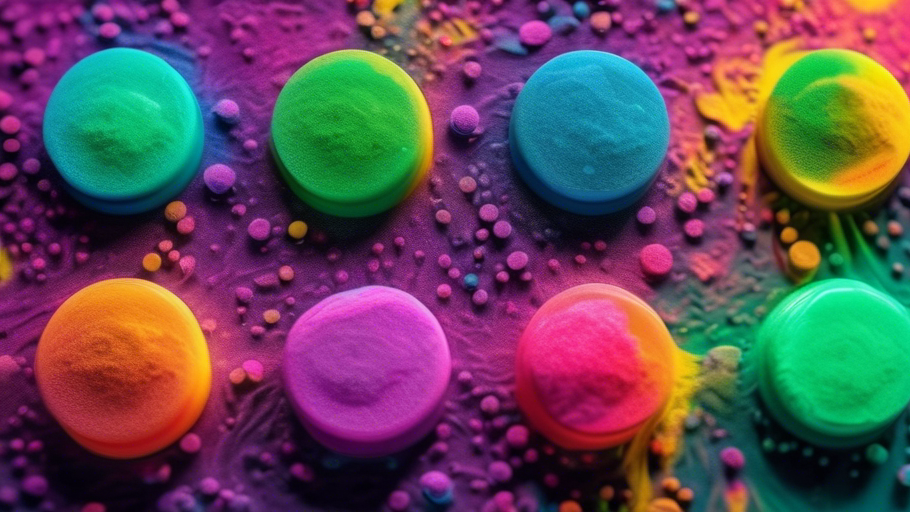MDMA, commonly known as Ecstasy or Molly, has become a widely recognized psychoactive drug, particularly within the nightlife and music festival scenes. Its usage can have significant implications, especially for new mothers who are breastfeeding.
The critical question that arises is: How long does ecstasy stay in your breastmilk?
This article aims to provide an exhaustive analysis of MDMA’s presence in breastmilk and its potential impact on infants.
Understanding MDMA
MDMA (3,4-methylenedioxymethamphetamine) is a synthetic drug that alters mood and perception. It is chemically similar to both stimulants and hallucinogens and produces feelings of increased energy, pleasure, emotional warmth, and distorted sensory and time perception. Typically ingested in pill or capsule form, it can also be snorted as a powder. Despite its popularity, MDMA is associated with various risks, including addiction and long-term cognitive effects.
MDMA and Breastfeeding: General Considerations
Breastmilk is considered the gold standard for infant nutrition, providing essential nutrients and antibodies. However, what a mother ingests can be transferred to her child through breastfeeding. Understanding the implications of MDMA exposure through breastmilk is crucial for the health and development of the infant.
How Long Does Ecstasy Stay in the Body?
In healthy adults, MDMA has an elimination half-life of approximately 7-9 hours, meaning it takes this amount of time for the body to reduce the drug concentration by half. However, it can take up to four days for most of the MDMA to be eliminated from the body. Various factors, such as metabolism, dosage, and frequency of use, can influence this duration.
MDMA Transfer to Breastmilk
Research has shown that MDMA is found at higher levels in breastmilk than in the bloodstream. This poses a concern for breastfeeding mothers who may have ingested MDMA, as the drug can be passed to the infant, potentially leading to adverse effects.
Duration of MDMA in Breastmilk
The precise duration that MDMA remains in breastmilk is not definitively known. However, it is generally advised to express and discard breastmilk for 48 hours following MDMA use to ensure that the drug has been sufficiently cleared from the body and to minimize the risk of infant exposure.
The Impact of MDMA on Infants
Infants exposed to MDMA through breastmilk may exhibit symptoms such as fever, seizures, rapid heartbeat, and abnormal eye movements. While the long-term effects on child development are not well understood, any exposure to psychoactive substances during critical developmental periods is a cause for concern.
Guidelines for Breastfeeding After MDMA Use
Given the potential risks, breastfeeding while using MDMA is not recommended. If a mother has used MDMA, it’s crucial to pump and discard breastmilk for a safe period before resuming breastfeeding. This precaution ensures that the infant is not exposed to any remaining traces of the drug.
Seeking Help and Consultation
Mothers who have used MDMA are encouraged to seek help right away. Treatment and support are available to assist with cessation of MDMA use. Consulting healthcare providers is a vital step in ensuring both the mother’s and the infant’s well-being.
Risks and Unknowns
The lack of extensive research on MDMA’s effects on breastfeeding and infant development means there are many unknowns. Consequently, the safest approach is to avoid MDMA use entirely during breastfeeding. The potential risks to an infant’s health outweigh the incomplete data currently available.
Stay tuned for the second half of this article, where we will delve into alternative resources and support systems, the importance of inclusive language in discussing parental drug use, and a conclusive summary of our findings on MDMA and breastfeeding.
Alternative Resources and Support
For mothers seeking additional information and support, several resources are available. The MotherToBaby Fact Sheets provide valuable insights into the effects of various substances on pregnancy and breastfeeding. These resources emphasize evidence-based information and are an excellent starting point for those looking to make informed decisions about MDMA use and breastfeeding.
The Importance of Inclusive Language
In discussions about substance use and parenting, it’s vital to use inclusive language that acknowledges diverse family structures and experiences. Terms like “mother” or “maternal” refer to the person who is pregnant, and “father” or “paternal” to the person who contributes sperm. By using person-centered language, we can create a supportive environment for all parents navigating the challenges of substance use and child-rearing.
Conclusion
In conclusion, while the recreational use of MDMA, or ecstasy, may seem harmless to some, its implications for breastfeeding mothers and their infants are serious and warrant caution. Given the higher concentration of MDMA found in breastmilk and the potential adverse effects on infants, the best practice is to avoid MDMA use altogether while breastfeeding. For those who have used MDMA, it is crucial to wait at least 48 hours and to pump and discard breastmilk during this period before resuming breastfeeding.
The lack of comprehensive research on the long-term effects of MDMA exposure through breastmilk underscores the need for caution and the importance of seeking professional medical advice. Mothers who have used MDMA should not hesitate to reach out for help and support from healthcare providers. Remember, the well-being of both mother and child is paramount, and informed decisions are key to ensuring a healthy start for the newest addition to the family.
As we continue to learn more about the effects of substances like MDMA on breastfeeding and infant development, it is essential to stay updated with the latest research and recommendations. By doing so, we can better support breastfeeding mothers and their children, ensuring a healthier future for all.
For more detailed information on MDMA and its effects, readers can refer to the National Library of Medicine’s Bookshelf on the subject, which includes an extensive list of studies and articles related to the topic.
